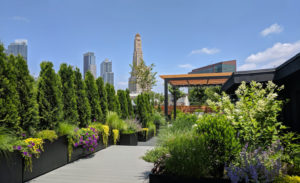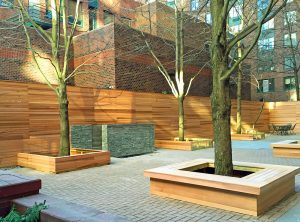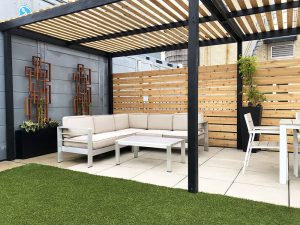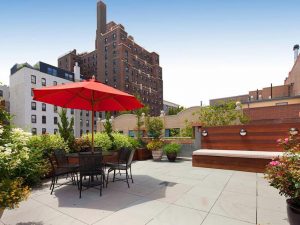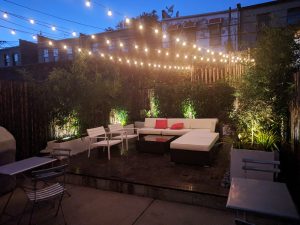I don’t remember when I first decided to become a landscape designer, but I do know once I did, I never looked back.
People I met would ask me what I did for a living, and when I’d tell them, invariably, there’d be a confused expression that met me. I got pretty good at explaining my job in as few words as possible.
As a career, what I do is labeled as a landscape designer. It falls under the degree of science, but in reality, it’s a beautiful fusion of both science and art.
So what does a designer of landscapes do?
In short, it’s a person who creates a majestic outdoor space by:
- Planning the final result
- Designing the steps to get there, and
- Implementing all of the details necessary.
Residential landscaping designs, outdoor parks, shopping malls, and even golf courses are usually the result of a landscape designer’s intensive work.
To be a true landscape designer, you must think beyond aesthetics. In this world, where our ecosystem is increasingly fragile, conservation is an integral part of a designed landscape.
As you look for a professional to turn your dream space into a designer landscape, don’t settle for just anyone. Make sure that when you are hiring a landscape designer, you look for these seven important traits.
1. They can see your vision clearly.
Ultimately, a landscape designer is an artist. As such, some of them see the tools you’re giving them to work with and then try to superimpose their own vision over yours.
Make sure you know exactly what you want your result to look like and how you plan to get it there. Is it a brand new, made from scratch garden? A makeover for what you currently have? Or just a few additional touches and tweaks?
Bring as much detail with you to your consultation as possible. The dimensions of the space, soil content, nearby water sources, and climate are important factors. Knowing these ahead of time will help your landscape designer get an authentic feel for the work that needs to be done and how long it will take.
2. They’re honest about your requests.
Local landscape designers know the area well. They are aware of common pitfalls, delays, and setbacks that can occur, and they watch for them.
They also know how long a project should reasonably take and what the approximate landscape design cost to undertake it will be.
If a landscaping designer jumps on your project without discussing potential concerns, be on alert. They may not be taking your budget or schedule seriously. Or, you could have given them too much leeway, and they’re running with it.
3. The company/person comes highly recommended.
The typical undertaking of how to find a landscape designer should be similar to any other job. Always look for recommendations and do your research.
Ask your trusted friends and family if they have any suggestions. Use Google and Yelp to check for any red flags.
Remember that even the best companies have an occasional negative review. Still, your potential landscape contractor should have at least nine glowing compliments for every other bad one.
4. Their qualifications are up-to-date.
Anyone can claim an accreditation that they don’t have. When you choose a landscape designer, they’ll be in and around your home for long periods of time. Don’t take their statements at face value.
Ask for proof of qualifications like:
- Any professional accreditations
- Landscaping designer memberships (ASLA and APLD are two of the big ones)
- Current insurance
- Client references
- A portfolio of past work
All of these are important to a client. A professional landscape designer will have no problem providing these documents on demand.
5. Their estimates are consistent with others you’ve received.
Like with any big undertaking, you should shop around before deciding on a landscape designer.
Get at least three estimates from local landscape designers with good reputations. If they all have similar costs and time frames, you can expect the average to be accurate.
If the project’s average will be outside of your budget and expected finished date, consider it seriously. You may have to decide what you want to compromise on.
6. The fine print on their estimates is acceptable.
Every company wants to cover their back end, so there’s always a stipulation somewhere.
Make sure you check the fine print of each estimate you get. They should all be similar and reasonable.
7. They are willing to go through the process with you ahead of time.
If you’re not familiar with landscape design, it’s easy to be taken advantage of by unscrupulous companies.
Before you sign a contract, make sure it includes everything that your landscaping designer will be responsible for. Check that the contract fully discloses:
- The landscape designers tasks from start to cleanup
- The full expected result
- The process of installation and standard of work
- Timelines for each section of the job
- The breakdown and total costs
- Terms of payment (deposits, down payments, final payment due, late fees)
- Written guarantees
If you feel uncomfortable through the contract process, or it seems like the landscape designer is rushing you through, step away. Don’t let anyone push you into signing a contract that you’re not entirely happy with.
A professional, reputable landscaping designer won’t rush the process. Part of that process includes ensuring the client knows what will happen every step of the way.
This is an important step for both the client and the designer. When the two of you work together to walk through the contract, you can locate and fix obstacles before any actions are done. It saves wasted time on both ends.
Turn Your Landscaping Dream into a Beautiful Outdoor Reality
Wherever you live, you can have a lush, green environment. Even in New York City, my clients use everything from their yards to their roofs to make their landscaping desires come to life.
All it takes is your goal and budget and the right landscaping designer, and your outdoor space can become the haven of your dreams.


